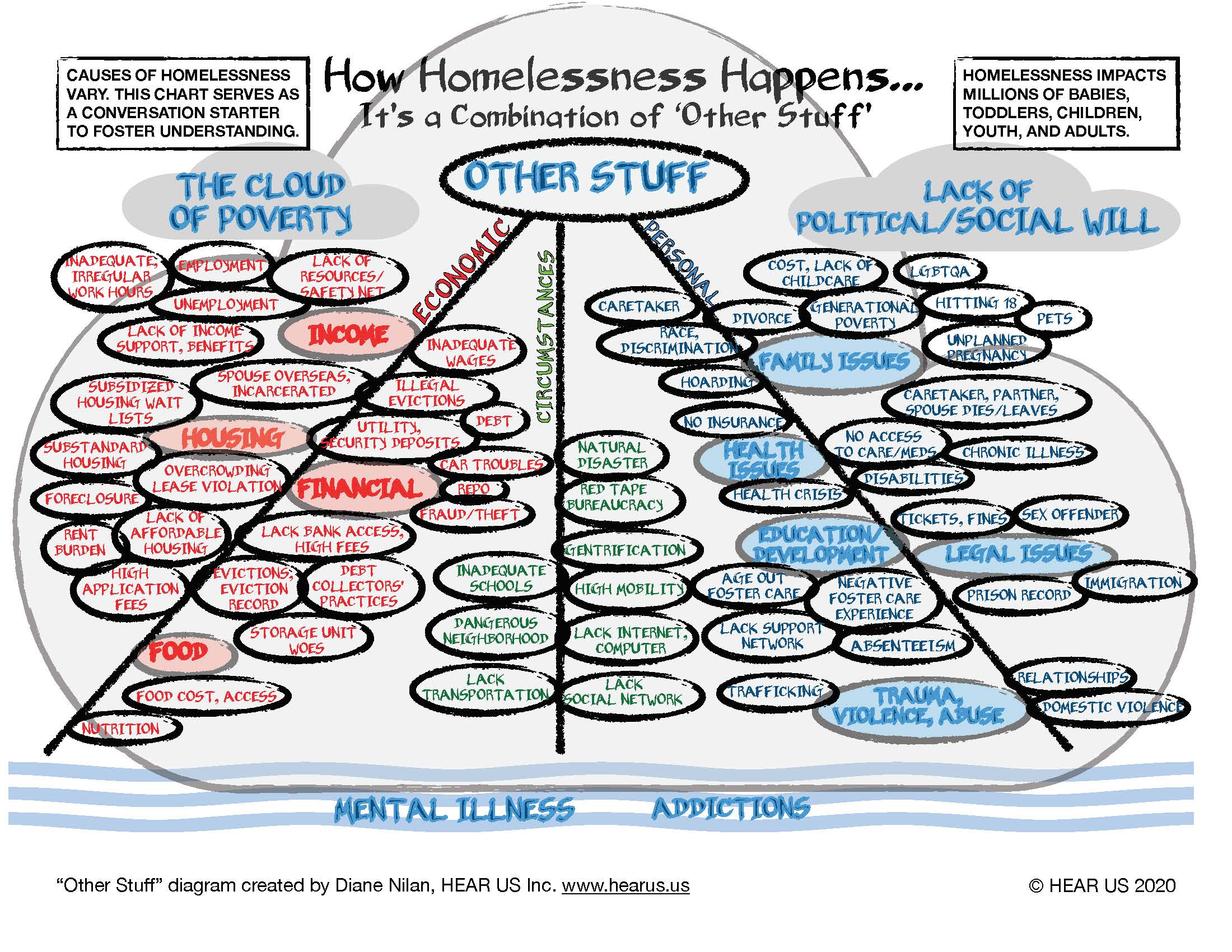Homelessness is complicated. Diane's 250-word Other Stuff diagram is not the be-all-end-all word on family homelessness, but it certainly offers a more comprehensive way of looking at this growing issue. It’s meant as a conversation (and action) starter.

To be clear, homelessness is much more than the dismissive “500,000 people sleeping on the streets” that gets tossed around by politicians and media.
A recent report on the number of identified students experiencing homelessness in the US blasts that misguided 500,000 number out of the water. More than 1.5 million students were identified in 2017–18, a 15% increase over the last 3 years.
“So, even though the data shows 1.5 million students as experiencing homelessness, the number could be greater.
“Schools and communities need to know who is experiencing homelessness in order to help them succeed — and policymakers at all levels must prioritize action to support these invisible and often over-looked students,” Duffield said. (CNN, 2/2/20)
And that’s the proverbial tip of the iceberg. (See How Many Kids are Homeless?)
The way I see it, our “lazy” approach to addressing homelessness — dismissing it as MENTAL ILLNESS/ADDICTIONS — keeps us off the hook. Those issues are too hard, and besides, it’s up to the individual. Not so. My chart will upset this paradigm.
- Legislators will need to get their hands dirty addressing the multiple issues that contribute mightily to this misunderstood national reality.
- Communities can’t continue with business as usual and not be concerned about the pieces of this issue that could be fixed locally.
- Schools can no longer ignore the issues that impact student success.
- Health care entities — providers and insurers —must remove, not erect, barriers to health.
- Property managers can’t keep making housing unattainable, keeping homelessness on the rise.
- Journalists must delve into the underlying issues that push and trap people into homelessness.
- All of us must give up thinking it’s someone else’s problem. It’s not. It’s all of us.
My colleagues and I have a new college textbook out, Changing the Paradigm of Homelessness, that focuses on family homelessness in a way that has not been done before. Among other things, it explains how distorted the way HUD counts homelessness is, and how it contributes to the growth of homelessness.
I wrote an op-ed column posted in the CT Mirror, including my Other Stuff chart. (11/2/20)
You might be thinking “this is too complicated for us to deal with,” but let me point out a few painful realities:
- Homelessness will not end, or be noticeably reduced until we put on our big girl and boy pants and do something about the many causes of this epidemic.
- Speaking of epidemics, yeah, that coronavirus issue. Just what we need — a bunch of sick people without homes looking for a place to be sick. Some of these folks are working jobs in places you frequent. On the humane level, can you imagine being that sick and having no place to rest and recover?
Might be time to ramp up solutions, STAT!
(The above was written before the outbreak of coronavirus in early 2020 (Posted on Medium). The impact of this pandemic will ravage those at risk of homelessness as well as those already without homes. We wrote this postto call attention to the impact of this global crisis on kids experiencing homelessness.)

